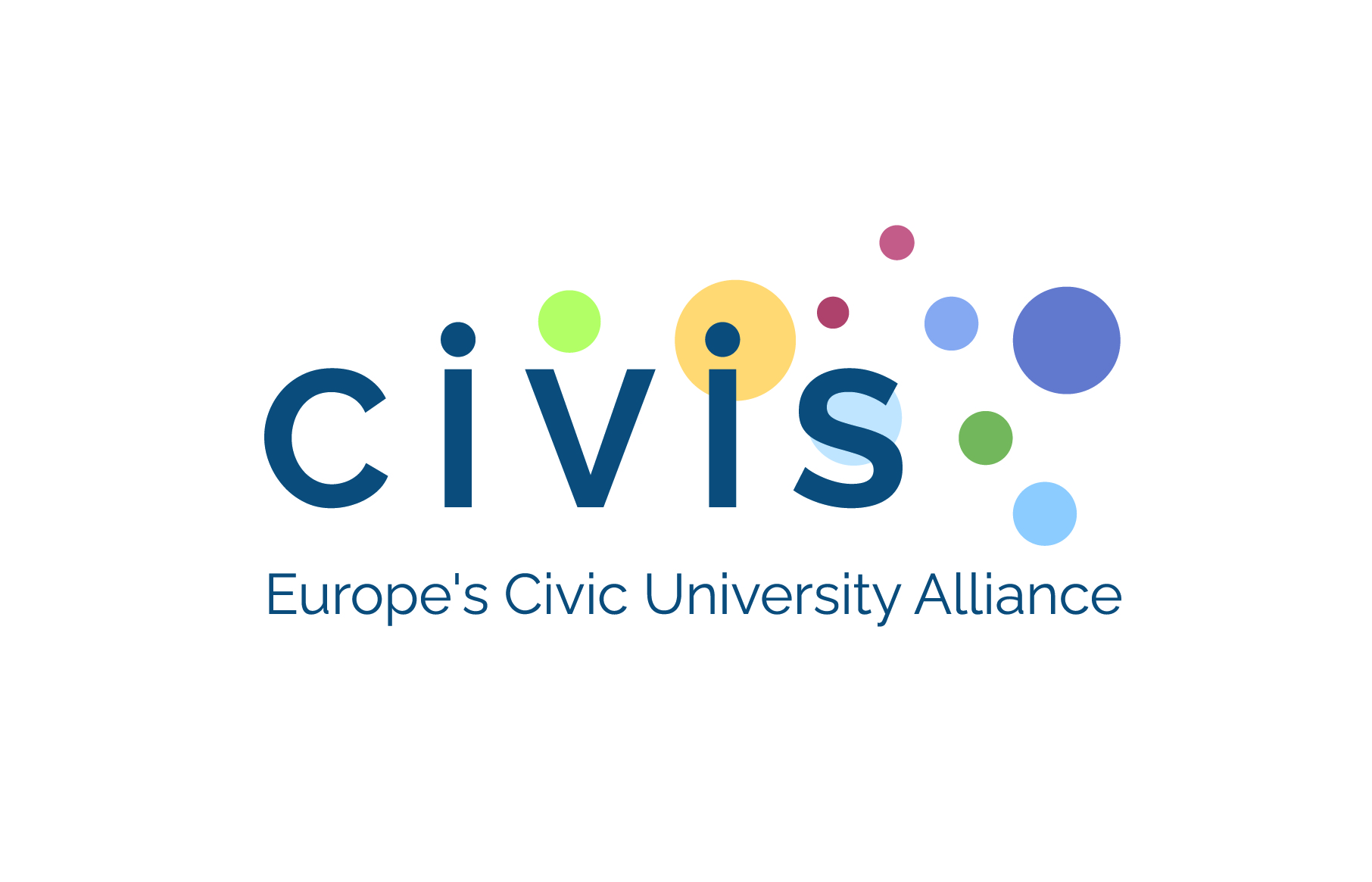Kooperationen
03-2014–present: Dr. Marie Abboud-Abi Saab, National Center for Marine Sciences, Batroun, Lebanon (tintinnid fossils).
09-2014–present: Dr. Undine Achilles-Day, Scottish Marine Institute, Scottish Association of Marine Science, Oban, Argyll, UK (standards in species descriptions).
09-2014–present: Dr. Erna Aescht, Biology Center, Upper Austrian Museum, Linz, Austria (standards in species descriptions).
04-2014–present: Dr. Viviana A. Alder, Instituto de Ecología, Genética y Evolución de Buenos Aires, Universidad de Buenos Aires, Buenos Aires, Argentina.
09-2014–present: Prof. Khaled A.S. Al-Rasheid, College of Science, King Saud University, Riyad, Saudi Arabia (standards in species descriptions).
04-2014–present: Dr. Charles Bachy, Monterey Bay Aquarium Research Institute, Moss Landing, CA, USA (phylogeny of tintinnid ciliates).
03-2002–present: Dr. Alfred Beran, Istituto Nazionale di Oceanografia e di Geofisica Sperimentale, Trieste, Italy (biodiversity and cultivation of marine planktonic ciliates).
03-2014–present: Dr. María Sonia Barría de Cao, Instituto Argentino de Oceanografía, Bahía Blanca, Argentina (tintinnid fossils).
01-1998–present: Dr. Helmut Berger, Consulting Engineering Office for Ecology, Salzburg, Austria (tintinnid fossils).
03-2014–present: Dr. William A. Bourland, Department of Biological Sciences, Boise State University, Boise, ID, USA (tintinnid fossils).
03-2014–present: Dr. Joong Ki Choi, Department of Oceanography, Inha University, Incheon, Korea (tintinnid fossils).
2005–2006: Dr. Anne Chao, National Tsing Hua University, Hsin-Chu, Taiwan (estimation of soil ciliate diversity).
09-2014–present: Prof. John Clamp, Dept. Biology, North Carolina Central University, Durham, USA (standards in species descriptions).
04-2009–present: Dr. Wayne Coats, Smithsonian Environmental Research Center, Edgewater, Maryland, USA (biodiversity of marine ciliates and their dinoflagellate parasites).
09-2014–present: Dr. John G. Day, Scottish Marine Institute, Scottish Association of Marine Science, Oban, Argyll, UK (standards in species descriptions).
03-2014–present: Dr. Mary Doherty, Department of Biology, Rhodes College, Memphis, TN, USA (tintinnid fossils).
05-2008–present: Dr. John Dolan, Laboratoire d’Océanographie, Station Zoologique, CNRS Université Pierre et Marie Curie-Paris 6, Villefranche-sur-Mer, France (biodiversity of marine tintinnid ciliates).
11-2010–present: Dr. Micah Dunthorn, Department of Ecology, University of Kaiserslautern, Kaiserslautern, Germany (phylogeny of ciliates, tintinnid fossils).
01-2010–01-2012: Dr. Hermann Ehrlich, Institute for Bioanalytical Chemistry, University of Technology Dresden, Dresden, Germany (chemical analyses of tintinnid structures).
09-1995–2009: Prof. Dr. Malte Elbrächter, Deutsches Zentrum für Marine Biodiversitätsforschung, Wattenmeerstation Sylt, Sylt, Germany (biodiversity of marine planktonic ciliates).
09-2014–present: Dr. Genoveva Esteban, Faculty of Science and Technology, Bournemouth University, Dorset, UK (standards in species descriptions).
01-1998–2013: Prof. Dr. Wilhelm Foissner, Department of Organismic Biology, University of Salzburg, Salzburg, Austria (taxonomy and phylogeny of ciliates).
09-2014–present: Prof. Dr. Mona Hoppenrath, Senckenberg am Meer, German Centre for Marine Biodiversity Research, Wilhelmshaven, Germany (dinoflagellate parasites in ciliates)
03-2014–present: Dr. Feng Gao, Laboratory of Protozoology, Ocean University of China, Qingdao, China (tintinnid fossils).
03-2014–present: Dr. Eleni Gentekaki, Department of Biology, Chulalongkorn University, Bangkok, Thailand (tintinnid fossils).
08-2014–present: Dr. Jun Gong, Yantai Institute of Coastal Zone Research, Chinese Academy of Science, Yantai 264003, China (phylogeny of tintinnids).
09-2014–present: Dr. Renu Gupta, Maitreyi College, University of Delhi, New Delhi, India (standards in species descriptions).
03-2014–present: Dr. Xiaozhong Hu, Institute of Evolution and Marine Biodiversity, Ocean University of China, Qingdao, China (standards in species descriptions, tintinnid fossils).
03-2014–present: Dr. Jie Huang, Key Laboratory of Aquatic Biodiversity and Conservation of Chinese Academy of Sciences, Institute of Hydrobiology, Wuhan, China (tintinnid fossils).
03-2014–present: Dr. Matthew D. Johnson, Woods Hole Oceanographic Institution, Woods Hole, MA , United States of America (tintinnid fossils).
04-2013–present: Dr. Jae-Ho Jung, South Sea Environment Research Division, Korea Institute of Ocean Science and Technology, Geoje, Korea (taxonomy and phylogenetic relationships of Oligotrichea).
2011–present: Dr. Takashi Kamiyama, Tohoku National Fisheries Research Institute, Fisheries Research Agency, Japan (tintinnid fossils).
03-2014–present: Dr. Barbara Kammerlander, Research Institute for Limnology, University of Innsbruck, Mondsee, Austria (tintinnid fossils).
09-2014–present: Prof. Komal Kamra, SGTB Khalsa College, University of Delhi, Delhi, India (standards in species descriptions).
03-2002–present: Prof. Dr. Laura Katz, Department of Biological Sciences, Smith College, Northampton, USA (phylogeny of Oligotrichea).
03-2014–present: Dr. Sun Young Kim, Resources Research Division, The National Institute of Marine Biological Resources Planning Bureau, Ministry of Oceans and Fisheries, South Korea (tintinnid fossils).
04-2013–present: Dr. Young-Ok Kim, Korea Institute of Ocean Science and Technology, Geoje, South Korea (taxonomy and phylogenetic relationships of Oligotrichea).
09-2014–present: Dr. Antonietta La-Terza, School of Bioscience and Veterinary Medicine, University of Camerino, Camerino, Italy (standards in species descriptions).
2004–present: Prof. Dr. Otto Larink, University of Technology Braunschweig, Department of Evolution Biology, Braunschweig, Germany (illustrated guide to coastal plankton organisms).
2011–present: Dr. Michele Laval-Peuto, Villefranche-sur-mer, France (morphologic investigations of tintinnids).
04-2013–present: Mag. Eun Sun Lee, Department of Biological Science, University of Ulsan, Republic of Korea (taxonomy and phylogenetic relationships of Oligotrichea).
09-2014–present: Prof. Diane Lipscomb, Department of Biological Sciences, George Washington University, Washington DC, USA (standards in species descriptions).
03-2014–present: Prof. Dr. Jere Lipps, John D. Cooper Archaeology and Paleontology Center, Santa Ana, CA, USA (tintinnid fossils).
03-2014–present: Dr. Christopher S. Lobban, Division of Natural Sciences, University of Guam, Mangilao, Guam, United States of America (tintinnid fossils).
03-2014–present: Dr. Hongan Long, Department of Biology, Indiana University, Bloomington, IN, United States of America (tintinnid fossils).
09-2014–present: Prof. Pierangelo Luporini, Lab of Eukaryotic Microbiology and Animal Biology, University of Camerino, Camerino, Italy (standards in species descriptions).
05-2003–present: Prof. Dr. Denis H. Lynn, Department of Zoology, University of British Columbia, Vancouver, Canada (tintinnid fossils, phylogeny of Oligotrichea).
09-2014–present: Dr. Miroslav Macek, Universidad Nacional Autonoma de Mexico, Tlalnepantla, Mexico (standards in species descriptions).
03-2014–present: Dr. Robert I. Mansergh, Institute of Marine Sciences, University of Portsmouth, United Kingdom (tintinnid fossils).
03-2014–present: Dr. Mercedes Martín-Cereceda, Departamento de Microbiología III, Ciudad Universitaria, Madrid, Spain (tintinnid fossils).
08-2010–present: Dr. George McManus, Univ. Connecticut, Department of Marine Sciences, Groton, USA (tintinnid fossils, biodiversity of marine tintinnid ciliates).
09-2002: Dr. Monica Modigh, Stazione Zoologica ‘Anton Dohrn’, Naples, Italy (investigation of biodiversity in marine planktonic ciliates).
05-2002–present: Dr. David J. S. Montagnes, School of Biological Sciences, University of Liverpool, Liverpool, UK (tintinnid fossils, biodiversity of marine planktonic ciliates).
2007–2011: Dr. Helga Müller, Private Laboratory, Konstanz, Germany (ultrastructure of resting cysts in Oligotrichea).
03-2014–present: Dr. Geoffrey O. Ong’ondo, Department of Biological Sciences, Egerton University, Egerton, Kenya (tintinnid fossils).
09-2014–present: Prof. David Patterson, School of Biological Sciences, University of Sydney, Australia (standards in species descriptions).
09-2014–present: Dr. Blanca Perez-Uz, Dept. Microbiologia, Universidad Complutense de Madrid, Madrid, Spain (standards in species descriptions).
03-2014–present: Dr. Pablo Quintela-Alonso, Department of General Ecology, Cologne Biocenter, University of Cologne, Cologne, Germany (tintinnid fossils).
1991–2006: Dr. Jeannette Cornelie Riedel-Lorjé, Institut für Frischwasser- und Abwasserbiologie, Hamburg, Germany (biodiversity and seasonal distribution of planktonic ciliates in marine and brackish coastal waters).
04-2014–present: Dr. Alessandro Saccà, Dipartimento di Scienze Biologiche e Ambientali, Università degli Studi di Messina, Messina, Italy (standards in tintinnid descriptions).
03-2014–present: Dr. Lúcia S. L. Safi, Virginia Institute of Marine Science, The College of William & Mary, VA, United States of America (tintinnid fossils).
04-2014–present: Dr. Luciana Santoferrara, Department of Marine Sciences, University of Connecticut, CT, USA (standards in tintinnid descriptions).
04-2013–present: Prof. Mann Kyoon Shin, Department of Biological Science, University of Ulsan, Republic of Korea (taxonomy and phylogenetic relationships of Oligotrichea).
01-2010–present: Dr. Paul Simon, Max Planck Institute for Chemical Physics of Solids, Dresden, Germany (ultrastructural analyses of tintinnid loricae).
09-2014–present: Prof. Weibo Song, Laboratory of Protozoology, Institute of Evolution and Marine Biodiversity, Ocean University, Qingdao, China (standards in species descriptions).
03-2014–present: Dr. Bettina Sonntag, Research Institute for Limnology, University of Innsbruck, Mondsee, Austria (tintinnid fossils).
2010–present: Prof. Dr. Thorsten Stoeck, Department of Ecology, University of Kaiserslautern, Kaiserslautern, Germany (phylogeny of colpodid ciliates; taxonomy of euplotid ciliates).
2011–present: Dr. Diane Stoecker, Horn Point Laboratory, University of Maryland, Maryland, USA (tintinnid fossils, ecology and biodiversity of tintinnids).
05-2003–present: Dr. Michaela C. Strüder-Kypke, Department of Molecular and Cellular Biology, University of Guelph, Guelph, Canada (phylogeny of Oligotrichea).
03-2014–present: Dr. Isabelle Trautmann, Department of Ecology, University of Kaiserslautern, Kaiserslautern, Germany (tintinnid fossils).
2007–2008: Dr. Sheng-Fang Tsai, Institute of Environmental Biology and Fisheries Science, National Taiwan Ocean University, Keelung (taxonomy and ultrastructure of Oligotrichea).
03-2014–present: Dr. Laura R.P. Utz, Faculty of Biosiences, Pontifícia Universidade Católica do Rio Grande do Sul, Rio Grande do Sul, Brazil (tintinnid fossils).
03-2014–present: Dr. Peter Vd’ačný, Department of Zoology, Comenius University, Bratislava, Slovak Republic (tintinnid fossils).
09-2014–present: Dr. Adriana Vallesi, Lab of Eukaryotic Microbiology and Animal Biology, University of Camerino, Camerino, Italy (standards in species descriptions).
09-2014–present: Dr. Alan Warren, Dept. Life Sciences, Natural History Museum, London, UK (standards in species descriptions).
03-2014–present: Dr. Thomas Weisse, Research Institute for Limnology, University of Innsbruck, Mondsee, Austria (tintinnid fossils).
03-2014–present: Dr. Stephen A. Wickham, Department of Organismic Biology, University of Salzburg, Austria (tintinnid fossils).
03-2014–present: Dr. Wuchang Zhang, Institute of Oceanology, Chinese Academy of Sciences, Qingdao, China (tintinnid fossils).
04-2013–present: Dr. Dapeng Xu, State Key Laboratory of Marine Environmental Science, Xiamen University, Xiamen, China (taxonomy and phylogenetic relationships of Oligotrichea).
04-2014–present: Dr. Zhenzhen Yi, School of Life Science, South China Normal University, Guangzhou, China (tintinnid fossils).
03-2014–present: Dr. Zifeng Zhan, Institute of Oceanology, Chinese Academy of Sciences, Qingdao, China (tintinnid fossils).
03-2014–present: Prof. Rebecca Zufall, Department of Biology and Biochemistry, University of Houston, Houston, TX, United States of America (tintinnid fossils).
Die Universität Salzburg bietet sechs Fakultäten mit 34 Fachbereichen und rund 90 Studien in digitalen und analytischen, natur- und lebenswissenschaftlichen, gesellschaftswissenschaftlichen, kulturwissenschaftlichen, theologischen sowie rechts- und wirtschaftswissenschaftlichen Fächern. Knapp 18.000 Studierende absolvieren hier Bachelor-, Master- und Doktoratsstudien.
1622 von Fürsterzbischof Paris Lodron gegründet und wieder errichtet im Jahr 1962, ist die Universität Salzburg heute die größte Bildungseinrichtung in Salzburg.
Damit das Studium zu einem rundum positiven Erlebnis wird, müssen auch die Wohnsituation, Essens- und Sportangebote, Möglichkeiten für Nebenjobs und Angebot an Events stimmen. Und auch Studieren mit Kind wird an der Universität Salzburg bestmöglich unterstützt.
Die Universität Salzburg ist eine sowohl regional verankerte als auch international sehr gut vernetzte Forschungseinrichtung. Als eine profilierte Volluniversität besticht sie durch ihre große Fächervielfalt, wobei die rund 2000 Wissenschaftler*innen durch ihre exzellente Forschung das Profil der Universität Salzburg maßgeblich bestimmen.
Ein Markenzeichen der Universität ist die forschungsgeleitete Lehre. Sie vereint die vielseitigen Forschungsleistungen mit einem hervorragenden Lehrangebot für alle Studierenden.
Vom breiten Studienangebot über relevante Services und wichtige Semestertermine bis hin zum Studieren im Ausland: Hier findest du alle wichtigen Informationen rund ums Studium. Speziell für Studieninteressierte gibt es spannende Schnupper-Angebote wie „Studieren Probieren“ und „Studieren Recherchieren“, wo sich Maturant*innen über den Uni-Einstieg informieren und darauf vorbereiten können.




